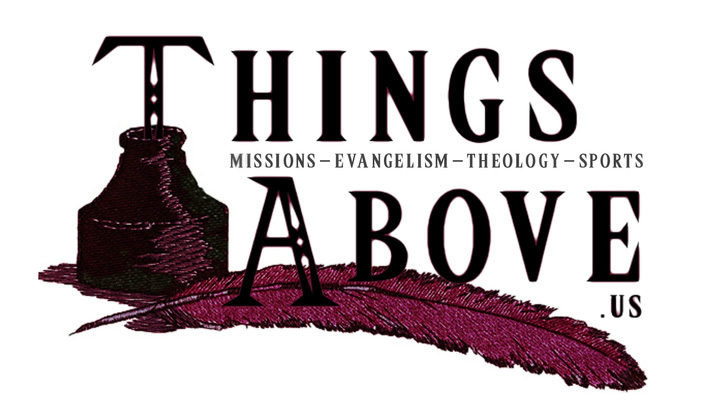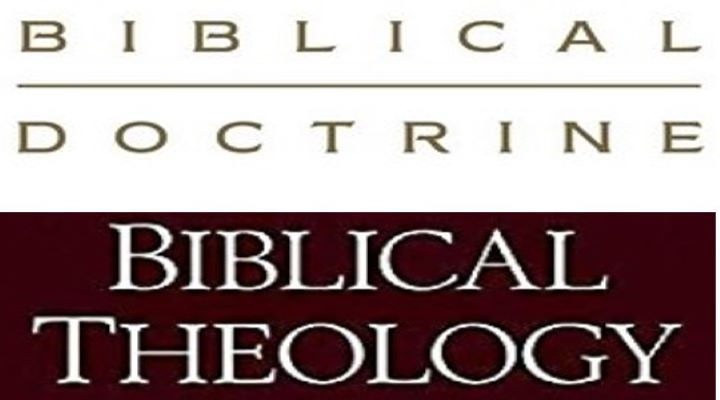In this article, we have the privilege of offering you another double review. We will be looking at Biblical Doctrine (a systematic theology, not a biblical theology), and Invitation to Biblical Theology (a how-to on biblical theology, not systematic theology). Confused yet? Don’t be. It will be okay. We can do this. Enjoy.
Biblical Doctrine
MacArthur, John and Richard Mayhue. Biblical Doctrine: A Systematic Summary of Biblical Truth. Wheaton: Crossway, 2017. 1024 pp. $60.00.
Biographical Sketch of the Authors
John MacArthur has served as pastor-teacher of Grace Community Church in Sun Valley, California for more than 50 years. He is the founder of Grace to You and president of The Master’s University and Seminary. He has written more books, commentaries, and guides to the Bible than could possibly be listed.
Richard Mayhue served in various positions at The Master’s Seminary from 1989 to 2016 including dean, research professor of theology, and executive vice president. His other works include Seeking God and Practicing Proverbs.
Introduction
Biblical Doctrine is the much-anticipated systematic theology from John MacArthur. Borrowing from Eugene Merrill, the authors shrewdly describe taking on the challenges of producing a systematic theology as “an old man’s game” (25). They go on to explain that they do not mean theology is for old people. Putting together a systematic theology is an “old man’s game” in the sense that it takes years of knowledge, wisdom, and experience to do it effectively. An example of this wisdom shows up early in this book. The authors write that “where there is false belief, there will be sinful behavior”, while also pointing out that merely having right doctrine does not automatically lead to godliness (41).
Summary
Following a helpful outline, lists of content, and preface (11–32), this massive book is organized into just ten chapters, covering the Bible’s major subjects (33–918). The concluding sections provide an appendix on the Progress of Revelation, Glossary, Bibliography, and standard indices (919-1024). There are more than 20 printed hymns throughout the book, organized by theme. For the purposes of this review, I will not be covering every topic. Instead, I will focus on the authors’ approach to theology and distinctives.
“Systematic” Theology?
The choice to title this book Biblical Doctrine is understandable but could also create some confusion when comparing systematic theology (ST) to biblical theology (BT). BT has to do more with the themes and storyline of Scripture. This book is a work of ST, meaning that the authors have systematically worked through what the Bible says about specific subjects such as who God is, the person and work of Christ, the nature of man, sin, salvation, the church, and so on. MacArthur and Mayhue have organized their ST according to ten of these major topics. They BT as being “a component of systematic theology” (38). They also engage in some BT themselves, arguing for the Kingdom of God as the overarching and unifying theme of the Bible (42–44).
Review
Readers should know upfront that MacArthur and Mayhue hold to cessationist views on the miraculous gifts (804–806) and dispensational premillennial or “futuristic premillennial” (856–857) interpretations of Scripture. As dispensationalists (of a sort), they draw a distinction between Israel and the Church (857–862). They self-identify as “biblicists” and describe their take on covenants as having an “emphasis on covenants that are biblically derived, not theologically constructed” (26). In other words, MacArthur remains committed to his well-known Calvinistic-but-not-necessarily-confessionally-Reformed convictions.
The topics of Justification and show up in the chapter on “The Application of Redemption” and each one warrants several pages worth of material. Sadly, many theologians have simply lumped adoption in with justification but MacArthur and Mayhue rightly characterize them as connected but distinct. They demonstrate that spiritual adoption is God bringing converted sinners into his family as sons and daughters with all the rights and privileges of His forever family (625). I had not considered the deliberate nature of Jesus’s words to Mary and the disciples in John 20:17 when he refers to “ … my Father and your Father, … my God and your God…” (627). The authors argue that by not simply saying “our Father and our God,” Jesus was making a distinction between our derived position as adopted sons and daughters and his unique position as the eternal Son.
While I disagree with the authors on some of their second and third-tier theological conclusions in this book, I found much more to commend than quibble with. I appreciated the consistent devotional tone throughout this work. The very first page following the dedication is the hymn “Praise to the Lord, the Almighty,” and the authors include more hymns throughout the book. MacArthur and Mayhue write that their ultimate goal is the elevation of holy worship by their readers (27).
Conclusion
MacArthur and Mayhue’s Biblical Doctrine is a book that any believer can benefit from. It also serves as a concise guide to the teaching of one of the most influential preachers of the past century. Be forewarned, this is a hefty book in content and as well as physical weight. I heard about a small group using Biblical Doctrine in a theology class and when one of them saw the size of the book he asked if they could skip ahead to the section on eschatology because he was convinced the Lord would return before they ever had a chance to finish. The authors have succeeded at their goal of producing a systematic theology that is equally at home with scholars, church leaders, and laypeople who just want to learn theology. As they explain, “Theology is not fully finished until it has warmed the heart (affections) and prompted the volition (will) to act in obedience to its content” (37).
Recommended.
A copy of this book was provided by the publisher in exchange for an honest review.
Invitation to Biblical Theology
Kimble, Jeremy M. and Ched Spellman. Invitation to Biblical Theology: Exploring the Shape, Storyline, and Themes of Scripture. New York: Kregel Academic, 2020. 528 pp. $44.99.
Biographical Sketch of the Authors
Jeremy M. Kimble serves as associate professor of theology and director of the Center for Biblical Integration at Cedarville University. His other works include 40 Questions About Church Membership and Discipline and A Readers Guide to the Major Works of Jonathan Edwards.
Ched Spellman also serves at Cedarville University as assistant professor of biblical and theological studies and lead developer of online Bible programs. He is the author of Toward a Canon-Conscious Reading of the Bible: Exploring the History and Hermeneutics of the Canon and One Holy Book: A Primer on How the Bible Came to Be & Why It Matters.
Introduction
Invitation to Biblical Theology is Kregel Academic’s latest addition to their Invitation to Theological Studies Series. The discipline of Biblical Theology has experienced a resurgence recently and the authors of this book write that they wanted to serve a particular niche on the topic. Their goal was to balance brevity with depth and equip readers with the tools to learn the method, practice, and application of biblical theology (9, 11). I was intrigued by the balancing act the authors forced themselves into. Teach the academy and the church biblical theology and demonstrate how it can be done, but without it becoming a full-fledged work of biblical theology itself.
Summary
The book is made up of 22 chapters organized into 4 sections. Spellman wrote chapters 1–3, 5–11, and 22; while Kimble handled chapters 4, and 12–21. I will simply refer to “the authors” in this review. Section 1 addresses the concerns dealing with the Bible’s theology (15–118), beginning with the obvious question of what biblical theology is (15–52). In Section 2, the authors map the storyline of Scripture from Genesis to Revelation (121-232), followed by the Bible’s major themes in Section 3 (233–416). Finally, in Section 4 the authors explain how the Church and the academy can benefit from biblical theology (417–452). After a brief conclusion, the authors provide a chart of the various canonical orderings, followed by standard bibliography and Scripture and name indices (453–542).
“Biblical” Theology?
If systematic theology is the study of particular doctrines and historical theology is the study of what the church has believed about those doctrines over time, then what is “biblical theology”? Who would want “unbiblical theology”? The authors give a helpful “working definition” of biblical theology as “the study of the whole Bible on its own terms” (16). This serves as a jumping-off point to get into the connections to exegesis, systematic theology, and other disciplines (16–21).
Shape, Storyline, and Themes
The authors tackle the thorny idea that the whole Bible is about Jesus Christ (81–102). Thankfully, Kimble and Spellman do not simply read the Bible through the distorted lens of a preconceived, comfortable Jesus. They encourage readers to think through how each passage is about Christ by asking questions like “Which part of the grand storyline am I in?” while avoiding the error of allegorizing everything (93, 99). The diagnostic questions help biblical theology act as more of a road map compared to systematic theology’s dictionary or encyclopedia paradigm.
In Section 3, the authors lay out a process for working through the Bible’s themes (233–249). There is no way for the authors to cover every conceivable theme, but I think they effectively hit the major ones including God’s Glory, Kingdom, Covenant, Temple, and so on. For example, in Chapter 14 on covenant, the authors give a broad overview of covenants in Scripture and end with a balanced recommended reading list of various dispensationalists, progressive covenantalists, and more traditional covenant theologians (289–307).
Biblical Theology in the Trenches
The authors dedicate use Section 4 to explain how biblical theology can be done in the life of the church and academy. Rather than innovate for the sake of innovation, the authors take an admirably tried and true, ordinary means of grace approach to applying biblical theology. When a Christian’s regular intake of Scripture is informed by the Bible’s storyline, structure, and key themes (i.e. biblical theology), it can call and energize him in worship and service to God (418–419). Likewise, the “details and contours of the gospel message” are clarified by biblical theology, equipping the believer to become a more effective evangelist (420–421).
Review
There is a lot to commend in this book. First, I was excited to see it come along as another much-needed contribution to the study of biblical theology. I appreciated that the authors conclude each chapter with a set of discussion questions and resources for further study. They also provide a set of case studies and exercises for students to work through in the final chapter (433–449). When unpacking the often-strained relationship between the church and the academy, the authors affirm the legitimacy of both. They do not reserve theology for the academy, writing “The best theology is to be done for the churches” (437, emphasis original). More to the point, they say,
There is simply no way to compensate for the loss that occurs when the biblical or theological scholar is cut off from the local church (438).
Conclusion
The authors of Invitation to Biblical Theology have succeeded at their goal of providing an in-depth resource on the practice of biblical theology, without making it burdensome to work through. This book would serve equally well in a college classroom or a discipleship class in a local church. Many of the abuses and misunderstandings of Scripture over the years may have been prevented or at least addressed, had churches trained their people with this important skill set for reading their Bibles.
Highly recommended.
A copy of this book was provided by the publisher in exchange for an honest review.






Gotcha